
If you enjoy reading this article, why not check out our articles on What Do Ladybugs Eat? Let’s Find Out and The Color of Ladybugs – Explained.
What is bad about ladybugs?
Ladybugs have captured the hearts of many because of how they are depicted in animation pictures. They are a valuable insect to have in your garden because they are natural predators of plant-eating pests. However, just like any other animals, these little critters also have their ways on how they can protect themselves.
Are Ladybugs Poisonous?
They are not poisonous to humans. However, they have a toxic effect on some other animals, such as birds or lizards. They release a foul odor smell to warn other animals that they are poisonous.
There are more than 6,000 species of ladybugs in the world, and each of them has this capability of releasing a foul smell to protect themselves from any harm that may come their way. In this article, you will learn how ladybugs defend themselves and how their noxious smell affects humans and other animals.
How Ladybugs Protect Themselves from Harm
It is such a wonder how nature created a warning system through the ladybug’s colors. Some of the colors that warn their enemy are red, yellow, and black. And these colors are what ladybugs usually have. The colors show predators that they are about to eat something that is not pleasant to their taste pallet.
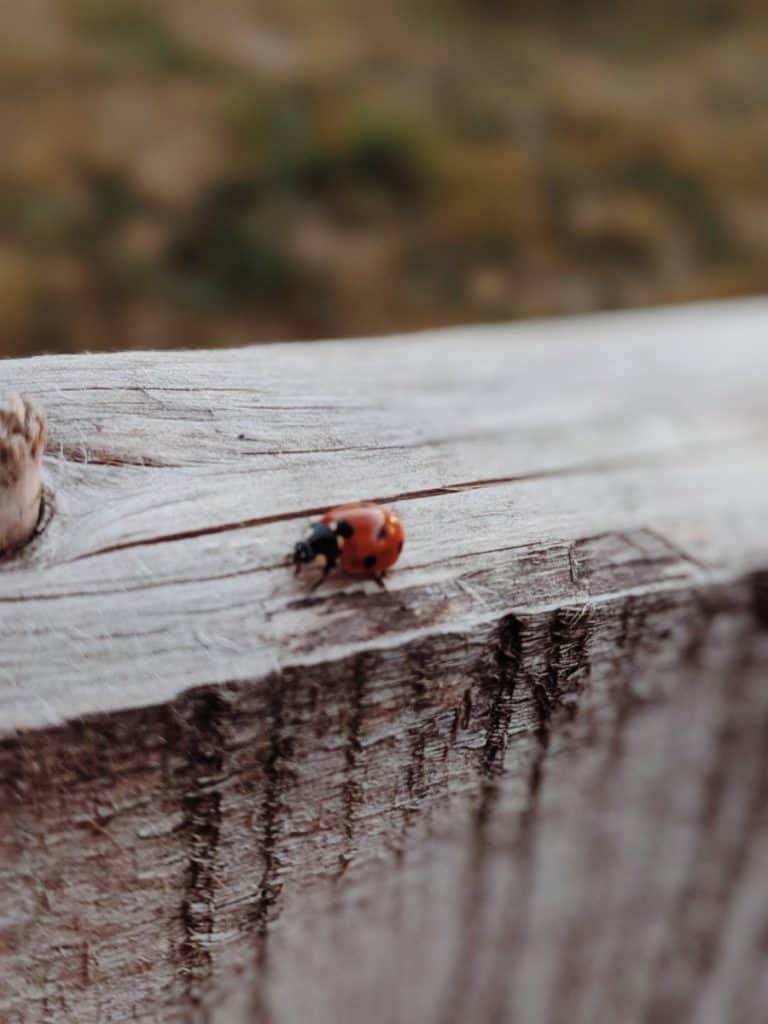
The Colors of ladybugs: Their colors can warn predators of their dangers such as being poisonous and bad tasting. The ladybug that consumed the most food during its early days tends to be the brightest color out of all of them. The more voracious the ladybug is, the better their survival rate becomes.
What will repel ladybugs? Having said this, ladybugs who ate skimpy will have an ashen body color. The better their diet gets, the more poisonous the ladybugs can be. Those ladybugs with bright colors will have less chance of falling prey to predators.
The Odor they Release: The odor that they release is similar to the smell of dead leaves. Another great advantage of their colors is its capability of camouflage. They can easily blend to bright colored flowers, thus avoid getting seen by their natural enemies.
Do ladybugs pretend to be dead? One capability that ladybugs also have is ‘playing dead.’ When they sense that a predator is on to them and they can’t handle them, all they would do is lay on their backs. They would also pull their legs up, and typically release a small amount of blood from their legs.
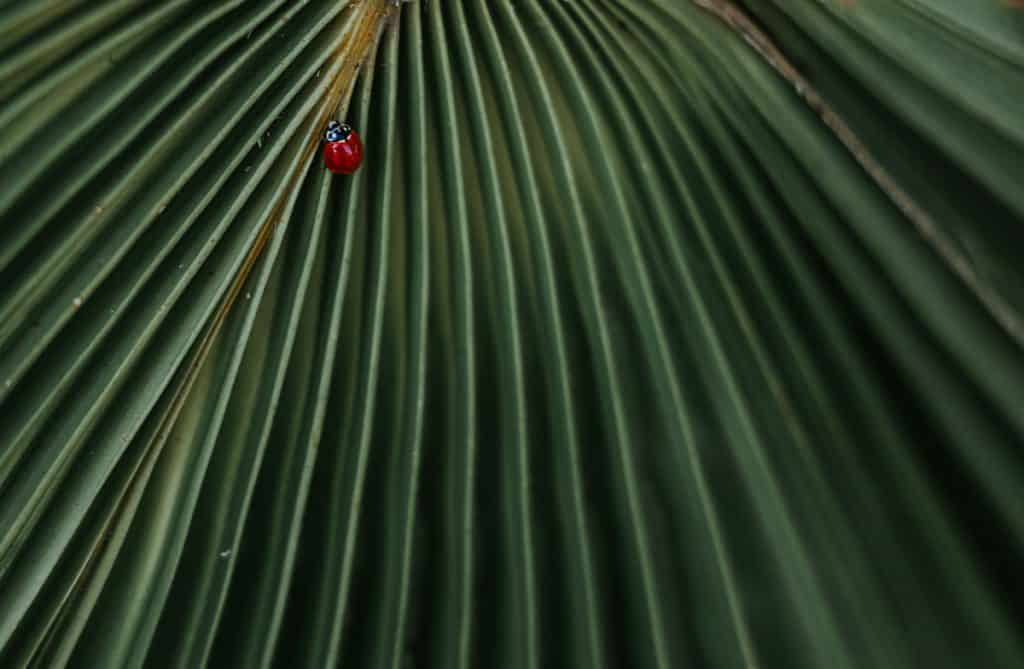
The Chemical they Release: The ‘blood’ that they excrete is yellow, and it smells quite awful! The term that is used for this technique is called reflex bleeding. The putrid smell of ladybugs and the apparent look of death will deter insects and animals that would want to harm them.
The chemical odor that the ladybug releases is called pyrazine. This chemical is released on the ladybug’s special glands located at their feet. Now, the same chemical is released once the prey eats the ladybug.
Dangerous to Predator: It will take a whole lot of ladybugs to kill a particular predator. However, once a specific predator tastes how bad they are, they wouldn’t dare to eat another one.
Once the threat has passed, the ladybug will continue its regular activities.
The Ladybug’s Dangers to Living Things
Now that you know the ladybug’s defense mechanism, the following will talk about how they affect humans and other animals.
Humans
Myths Behind It: There are many garden myths out there, such as the spots of ladybugs that will tell their age. Another myth about ladybugs is if you eat them, you will die because they release poison as their defense mechanism.
Well, as said above, it is a myth. Ladybugs are no harm to humans. However, their smell is overpowering, and it may get annoying if you own a ladybug pet or have them in your home.
Are Ladybugs Beneficial to Humans? On the off chance that you do ingest a ladybug, there is nothing to fear. Aside from the awful taste, it shouldn’t harm an individual. Ladybugs are considered to be friendly and are a beneficial insect to humans.
Are Ladybugs beneficial to Plants? They are very helpful to humans because they feed on aphids and other pests that may be harmful to your plants? They usually place their eggs near an aphid colony so that once they hatched, they have all the food sources that they may need.
Do ladybugs carry disease? When these small critters crawl on your skin, it doesn’t mean that they will poison you. They would affect humans when they enter your home. During their hibernation period, they tend to come to your home for refuge.
Are ladybugs aggressive? Aside from the pungent smell of their poison, they can also leave yellow stains in parts of your home before they die. They can also weaken the structure of your home a little since they tend to burrow in the wood parts of your home.
This is because they hibernate in groups, which can be a real nuisance to homeowners. The good thing about them is that they won’t feed on your clothes, household items, and the house itself.
How to avoid Ladybugs? In order to make sure that they do not come into your home, it is best to check if you have any damaged windows, door trims, and clapboards. It is also best to take the time to caulk your home and seal any cracks that you may have on the outside.
There are a lot of home remedies that you can do to keep the little critters out of your home. If you are not confident enough to get rid of them on your own, there is always the pest control to call in these cases.
Ladybugs Love gardens: Aside from your home, ladybugs love to spend time in your gardens. However, these are the insects that you would want to stay on your plants. They love to feed on aphids, mealybugs, and other pests that may be present in your garden.
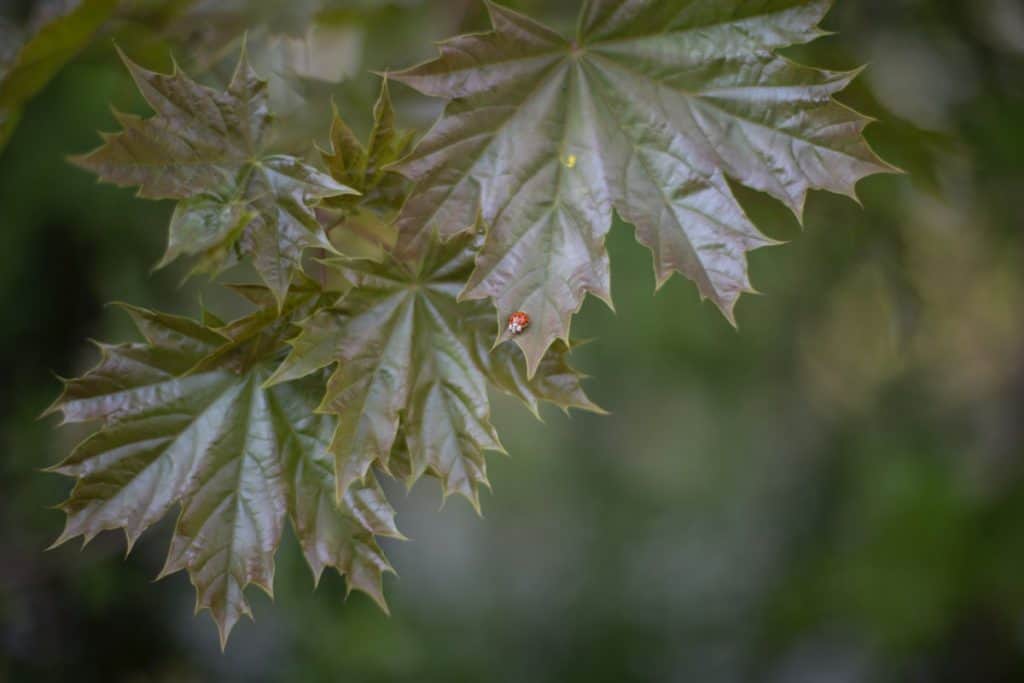
Species of Ladybugs: However, there are two species that you might want to look out for since they eat the leaves of your plants. There is the Asian Lady Beetle and Epilachninae, who is called the vegetarian of the ladybug species. If you’re interested in learning more about the Asian Lady Beetle and other ladybugs, you may want to read Do Ladybug Spots Tell Their Age?
They tend to feed on the leaves of your plants. However, they do love aphids, as well. So, if you have a garden, it is best to leave ladybugs alone unless it’s the two species mentioned above.
Furry Friends (Dogs and Cats)
If you have any pets at home, you might be worried if the ladybugs that are found in your garden are poisonous to them. No need to worry. The chemical that ladybugs releases cannot harm your pets, but of course, to a certain extent.
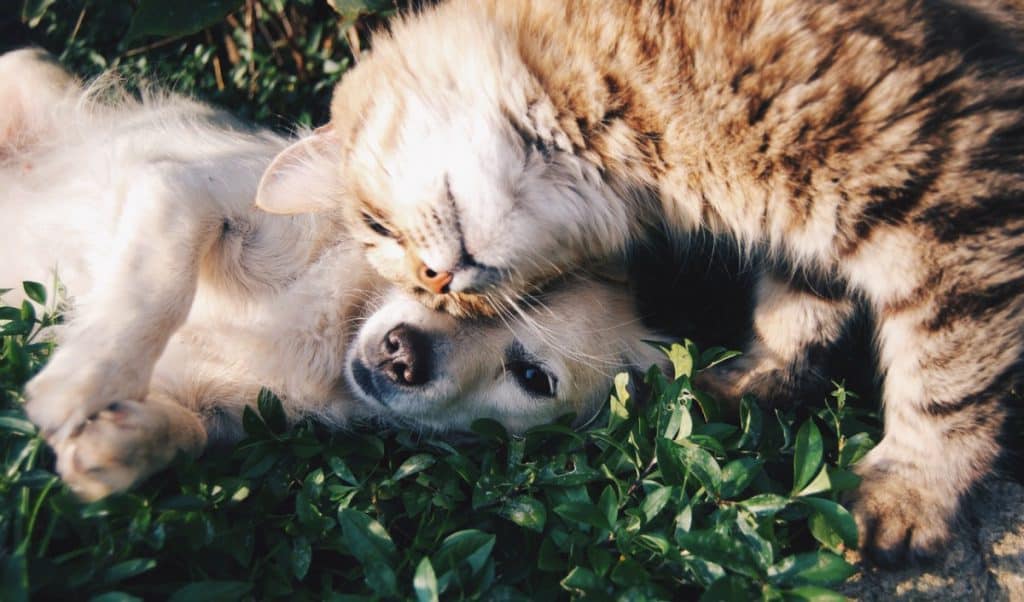
Are Lady Bugs toxic to Pets?
They would only be harmful if the ladybugs were sprayed with bug spray or pesticides before your pets ingest them. Dogs and cats are fond of eating anything that they may find since they are such curious animals. If you’re interested in learning about natural alternatives to dealing with ladybugs or other house pets, check out What Can Ladybugs Damage? The surprising answer.
Can ladybugs kill Dogs/Cats?
In this case, ladybugs can be harmful to them. Not only that, the strong smell that the ladybug possesses, and its bitter taste can be sickening to them. Now, finding too many ladybugs in your dog’s system is not good because it can be painful for them as well.
What happens if a dog eats too many ladybugs?
Eating too many ladybugs will cause chemical burns on your dog’s stomach because of the toxins that a ladybug possesses. Aside from the stomach, there can be mouth lesions present as well.
What happens if a cat eats too many ladybugs?
If you have a cat at home, the same symptoms may happen to them if they ingest a lot of ladybugs. They will have an irritating feeling on their gastrointestinal tract once they eat too many ladybugs.
If you do decide to spray your garden or home with bug spray or insecticides, you might as well keep a good eye on your pets or have them locked up for the time being. Once they ingest a ladybug that has been in contact with such chemicals, your pet’s life might be in danger.
Now, this doesn’t usually happen because once they know the taste of ladybugs, they will not try to eat them again. Most of these cases are found in stray animals since they do not have any food to eat on the streets.
Animals in the Wild
Just like your animals at home, most predators that eat the ladybug will stay away once they know the taste. There are some cases where they ignore them once they smell the chemical that the ladybug has been released.
Are ladybugs poisonous to other animals?
There are a lot of mammals and birds that eat ladybugs. However, toads are the only animal that doesn’t get affected by their awful taste and smell. This makes them the frequent predators of ladybugs.
Toads use their long tongues to catch ladybugs and other insects that are within their sight. Some of the insects in their diet are predators to the ladybugs, like flies, caterpillars, and mosquitoes. These insects prey on ladybugs by using their long beaks to inject poison into their prey. Spiders are also another predator of the ladybugs. They can easily trap them in their webs. The spider paralyzes the ladybugs and spins it inside a protective web to store for the future.
Are ladybugs poisonous to other species?
Now, ladybugs can also be a danger to their species. If the aphids are low in volume, the ladybug’s population is high. This would lead to a shortage of aphids, and it won’t be enough for the ladybugs to eat. During this time, the survival of the fittest is the name of the game. Ladybugs would resort to cannibalism in order to survive.
Most of the time, this happens when the adult ladybugs molt their hard shell. If the ladybugs are really hungry, it will result in eating the unhatched eggs and pupae during their search for protein.
Ladybug’s Bite (Poisonous or Not?)
It may be hard to believe that ladybugs bite, believe it or not, they do. More often than not, ladybugs prefer not to bite humans. If they are in a situation where there is human contact, they will release their poison on the human skin, making it stink.
Are ladybug bites poisonous to humans?
Some people may think that the chemical they release can be poisonous to humans. However, it is not. Ladybug’s bites are different from mosquitoes and other blood-sucking parasites. The bite is more like a pinch, and no blood meal is taken.
Are ladybug bites poisonous to insects?
Since ladybugs feed on soft-bodied insects, they do not have teeth. However, just like beetles, they do have mandibles or chewing mouthparts.
Ladybugs do not have poison glands or saliva, so their bite wouldn’t cause irritation. This is, of course, an exception if you are allergic to their bites. Now, the biting mouthpart of a ladybug rarely has the force required to bite through human skin since they hardly bite. Having said this, the bite from the ladybug will often result in a red bump on your skin that may hurt for a few days.
Still, just like any other insects, some people may have an allergic reaction to their bites. There are also some situations where it might lead to an adverse reaction such as anaphylaxis shock. If a ladybug bites you and you see unusual swelling, it’s best to contact your physician.
The species that usually bites is the Asian Lady Beetle. It is also a concern because these ladybugs are the ones who infest your homes during their hibernating period. Now, once the Asian Lady Beetle is incapable of finding food or moisture, their bite can be so hard it can break the skin.
How to avoid Ladybugs
In order to avoid these Asian Beetles from entering your home and lessen the risk of them biting you, there are a lot of home remedies that you can do.
- One of the best preventions is caulking your home before their hibernating season, which is winter.
- If they are already in your home, spray them with vinegar. The acidity of the vinegar is deadly to ladybugs. It can also remove the trail that they leave behind. This would also prevent other ladybugs from following them in your home.
- If all of the home remedies do not work, you can buy bug spray and pesticides to get rid of them.
- However, if you have pets at home, and they may be prone to eating the bugs, it might not be the best idea.
- Now, if the infestation is already hard to handle yourselves, contacting the nearest pest control is a great idea.
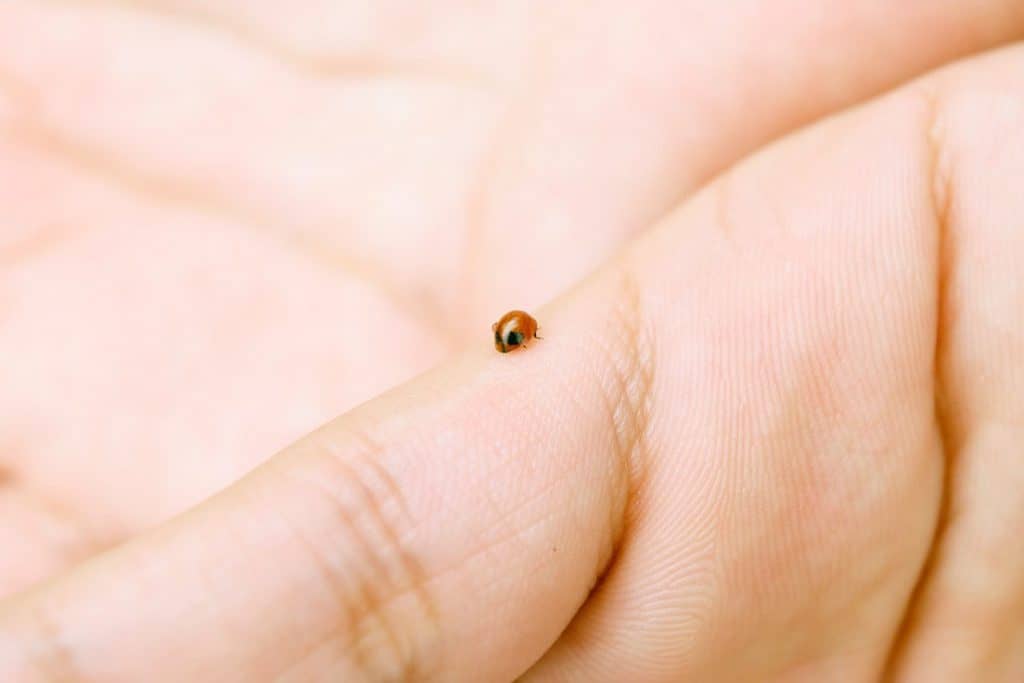
Conclusion
Ladybugs are poisonous to their predators. However, the chemical they release is not a harm to humans. More than just their vibrant color, the poison that they release will warn their predators that they taste bad. The brighter their color is, the more poisonous they are. There will be some situations where a predator eats the ladybug, and once they realize that they taste bad, they would spit them right out. We also mentioned a certain species of ladybug that bites, they are the Asian Lady Beetle. It can be dangerous if you are allergic to the ladybug; however, in most situations, you would feel a pinch since ladybugs do not have any teeth. Some swelling and redness can be expected on the affected area but if the symptoms worsen over time, then it is time for some medical attention. Overall, ladybugs would rather avoid humans than have any contact with them. There are two defense mechanisms that ladybugs use against their predator, which is playing dead and releasing the poison. If you are an animal, you might not want to mess with these little critters! So try and keep your pets away from ladybugs.
If you enjoyed reading this article, why not check out our articles on Can You Keep Ladybugs As Pets? and What Can Ladybugs Damage? The surprising answer
Recent Posts
Tiny Black Bugs in Bathroom NO WINGS: What They Are and What to Do!
Finding tiny black bugs in your bathroom can be uncomfortable, to say the least. Especially if they are persistent, or they appear in very large numbers, which they often like to do. When it...
Tiny Black Bugs in Plant Soil - What Are They & What To Do About It
A short horror story: You get a new houseplant. You do your best to take care of it. You’ve ensured that it has the right soil, the right amount of sun, it gets enough water. And then one day, you...

